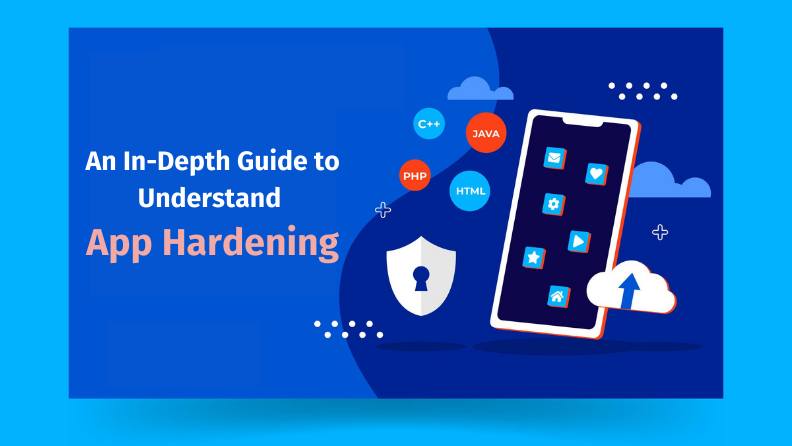Introduction
As mobile applications are on the increase, the demand for a strong security focus is becoming more and more important. When it comes to mobile app usage, security worries have also increased, among which include hacking of user’s data, malware attacks, and reverse engineering efforts. Not only does this undermine the privacy of users and their financial well-being; but it also reduces trust in developers of apps. In this light, technologies like AppSealing that shield against threats have become vital towards the protection of mobile app securities. Through incorporating features such as code obfuscation and runtime protection, AppSealing provides effective defense for ever-changing cyber threats ensuring that mobile applications remain intact and confidential in fast-changing digital landscapes.
Understanding app shielding
In today’s digitized world, there are multiple hazards facing mobile applications which require app shielding. Within the app shielding framework, one of them is code obfuscation that changes source code into a complicated structure hindering reverse engineering by making it hard to understand coding parts. Anti-tamper mechanisms maintain the app’s bytecode integrity by preventing any unauthorized changes that could lead to loss of its security. Encryption serves as an assurance that the data is not intercepted or accessed without authority hence protecting confidentiality and privacy. Through runtime protection, suspicious activities are detected while they happen within the application to respond quickly and curtail them, thereby aiding in the prevention of malicious attacks. Developers can enhance their mobile applications for use against threats that keep on changing and guarantee stronger safety for users while protecting significant information from possible theft or misuse.
AppSealing: A comprehensive security solution
In the whole field of shielding applications, AppSealing blows all competition out of the water. It has an extensive range of security features that safeguard mobile apps on different platforms such as Android and iOS. Let us now move into some of the components making up AppSealing:
-
Code obfuscation
A central role in enhancing mobile application security is played by advanced code obfuscation techniques through AppSealing. As a result, it becomes very difficult for attackers to reverse engineer an application by transforming source codes into a complex structure which deters attackers from having access to sensitive data. This tough self-defence mechanism improves the general security position of mobile apps thereby minimizing their vulnerability to unauthorized access as well as data breaches.
-
Anti-Tampering mechanisms
AppSealing provides developers with strong anti-tampering capabilities for securing their apps’ binary code integrity. In this way, they can identify and prevent any changes that are not permitted from being made to the application so that its functionalities are maintained and attackers do not insert malicious code or manipulate important parts of the app. This preemptive system further strengthens the overall security of an app, making it more resilient against possible hacks and unauthorized entry.
-
Encryption
To ensure secure information transmission and storage in mobile applications, AppSealing is more than just typical security provisions since it easily incorporates encryption protocols in its structure. Information like user names, banking details, and other sensitive details are therefore rendered unreadable by encrypting them hence reducing chances of interception or hacking by cyber attackers. By protecting customer data, AppSealing ensures that user privacy is upheld thus providing a buffer against leakages and reinforcing users’ trust in an app’s security standards.
-
Runtime protection
AppSealing’s runtime protection offers real-time monitoring of application execution and anticipates and counteracts malicious activities. The dynamic defence feature thwarts code insertion, memory cracks, and dynamic analysis attacks that take some time to take place. With an eye on any suspicious actions happening in the app, helps secure the app better for resilience against novel risks while assuring a hack-free user experience.
Benefits of AppSealing
Implementing AppSealing has various benefits to both app developers and end-users:
-
Enhanced security
Mobile app developers can employ AppSealing to strengthen their applications thus reducing the risk associated with cybercrime and data breaches. In this way, users are not only assured but also make information from being used by hackers who may have other intentions. This is important as it ensures the protection of user data privacy and integrity during production cycles thereby promoting safe interactions between the users regularly.
-
Regulatory compliance
With data protection regulations like GDPR and CCPA changing over time, app makers need to be in sync with them otherwise they may not comply. Appsailing has strong security that defends users’ data helping organizations to meet these strict criteria. AppSealing is a way of showing users that developers are dedicated to privacy and can safely operate within relevant guidelines and minimize the risk of breaking the law or being prosecuted on account of data losses.
-
Improved user experience
When mobile applications are secure, there is a sense of trust that comes from this which ultimately contributes to a positive user experience. AppSealing makes malware and unauthorized access difficult thus enhancing the usability and reliability of the app. This will lead to higher rates of customer satisfaction as well as repeat business. With AppSealing, developers also ensure users’ details from falling into the wrong hands thus raising hopes in their apps for future versions to come out more successfully than ever before.
-
Cost-effectiveness
For long-term cost effectiveness investing in app shielding solutions such as AppSealing is necessary. Organizations can avoid hefty fines, legal risks and damage to their reputation by reducing exposure to data breaches and security incidents risk through. The financial and reputational losses that may result from a cyber-attack are far greater than the initial investment in strong security measures through AppSealing. By so doing, it not only protects them against current threats but also ensures that they continue thriving amidst evolving digital security vulnerabilities.
Conclusion
In today’s digital world, mobile app security should be regarded as a top priority. To guard their applications and users against various cyber hazards, app developers must take proactive steps. To address these emerging threats effectively, AppSealing offers an all-inclusive defence strategy using its advanced shielding technologies. Code obfuscation, anti-tampering mechanisms, encryption procedures and runtime protection enable AppSealing to enable developers of apps to reinforce their application’s weaknesses effectively. As a result of changing mobile landscape, the adoption of this kind of proactive safety measures is essential for protecting sensitively kept information.




